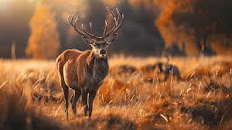The Art and Science of Wildlife Photography:
Wildlife photography is a captivating blend of art and science that offers a unique glimpse into the lives of animals in their natural habitats. It’s a pursuit that not only demands technical proficiency with a camera but also a deep understanding of animal behavior, patience, and a genuine respect for nature. Whether you are an aspiring photographer or simply an admirer of wildlife, this field offers endless opportunities for exploration and inspiration.
The Allure of Wildlife Photography
Essential Gear for Wildlife Photography
To excel in wildlife photography, having the right equipment is essential. While creativity and vision are key, quality gear can significantly enhance your ability to capture stunning images. Here are the basics:
-
Camera Body: A DSLR or mirrorless camera with fast autofocus and high-speed burst mode is ideal for capturing moving subjects. Full-frame cameras offer superior image quality, especially in low-light conditions.
-
Lenses: Telephoto lenses are the cornerstone of wildlife photography. A lens with a focal length of at least 300mm allows you to photograph subjects from a safe distance without disturbing them. Wide-angle lenses are also useful for capturing animals within their environment.
-
Tripod/Monopod: Stability is crucial, especially when using heavy lenses or shooting in low light. A sturdy tripod or monopod minimizes camera shake and ensures sharp images.
-
Accessories: Additional batteries, memory cards, and a weather-resistant camera bag are indispensable for long shoots in the field. A lens hood and filters can protect your gear from the elements and enhance image quality.
Techniques for Capturing Stunning Wildlife Images
-
Understand Animal Behavior: Observing and understanding the habits of your subjects can make a world of difference. Knowing when an eagle is likely to take flight or predicting the movements of a herd of elephants allows you to anticipate and capture dramatic moments.
-
Patience is Key: Wildlife photography often requires long hours of waiting. Whether it’s a lion’s hunt or a bird’s courtship display, the best shots come to those who are willing to wait.
-
Master Lighting: Natural light is a wildlife photographer’s best friend. The golden hours—early morning and late afternoon—offer soft, warm light that enhances the texture and color of your subjects.
-
Composition Matters: Techniques like the rule of thirds, leading lines, and framing can elevate your images from good to great. Including elements of the animal’s habitat in the frame can add context and storytelling to your photographs.
-
Shoot in Burst Mode: Wildlife is unpredictable. Shooting in burst mode increases your chances of capturing the perfect moment, whether it’s a predator’s strike or a bird’s takeoff.
Challenges in Wildlife Photography
Ethics also play a significant role. It is imperative to prioritize the well-being of the animals and their habitats over getting the perfect shot. Avoid disturbing wildlife, maintain a safe distance, and adhere to local laws and guidelines. Remember, the goal is to document nature’s beauty, not to disrupt it.
Tips for Aspiring Wildlife Photographers
-
Start Close to Home: You don’t need to travel to exotic locations to practice wildlife photography. Local parks, nature reserves, and even your backyard can be rich with opportunities.
-
Learn from the Experts: Study the work of renowned wildlife photographers and participate in workshops or online courses to hone your skills.
-
Join Communities: Engaging with fellow photographers can provide inspiration, feedback, and networking opportunities. Social media platforms and photography forums are great places to share your work and learn from others.
-
Experiment and Innovate: Don’t be afraid to try new techniques or perspectives. Some of the most iconic wildlife images are the result of creative experimentation.
-
Be Prepared: Wildlife photography often involves early mornings, long hikes, and unpredictable conditions. Dress appropriately, carry essential supplies, and always be ready for the unexpected.
Bird Photography: Capturing Nature’s Feathered Beauty
The Magic of Bird Photography
What makes bird photography so captivating is the diversity and beauty of the subjects. From majestic eagles soaring through the sky to tiny hummingbirds flitting between flowers, birds showcase an incredible range of colors, patterns, and behaviors. Each species presents a unique photographic challenge, whether it’s capturing a heron’s precise movements or freezing the rapid wingbeats of a sparrow in mid-air.
Beyond aesthetics, bird photography allows you to connect with nature on a deeper level. It encourages patience, observation, and an appreciation for the delicate balance of ecosystems. Every photo tells a story, be it a bird building its nest, hunting for food, or interacting with others.
Essential Gear for Bird Photography
- Camera and Lens: A DSLR or mirrorless camera with a fast autofocus system is ideal for bird photography. A telephoto lens with a focal length of at least 300mm is a must to capture birds from a distance without disturbing them.
-
Tripod or Monopod: For stability during long shoots, especially when using heavy lenses, a sturdy tripod or monopod is invaluable.
-
Clothing and Accessories: Neutral-colored clothing helps you blend into the environment. Binoculars are also useful for spotting birds before photographing them.
Techniques for Stunning Shots
-
Understand Bird Behavior: Knowledge of your subject is crucial. Study the species you want to photograph, their habits, habitats, and peak activity times. Early mornings and late afternoons are often the best times for bird activity and favorable lighting.
- Master Your Camera Settings: Use a fast shutter speed (1/1000s or faster) to freeze motion, especially for birds in flight. A wide aperture (low f-number) can help create a beautifully blurred background, highlighting the bird.
-
Compose Thoughtfully: Apply the rule of thirds to make your composition more dynamic. Include elements of the bird’s habitat to add context and tell a richer story.
-
Be Patient and Ethical: Birds are skittish by nature, and getting the perfect shot often requires patience. Always prioritize the bird’s well-being by maintaining a safe distance and avoiding nests during sensitive times.




.jfif)
.jfif)
.jfif)
.jfif)
.jfif)




No comments:
Post a Comment